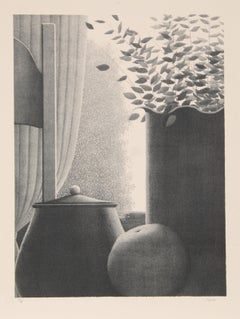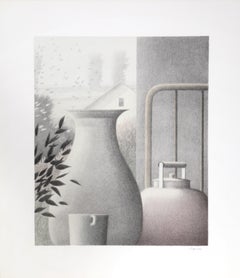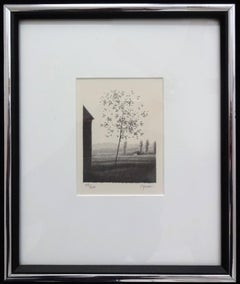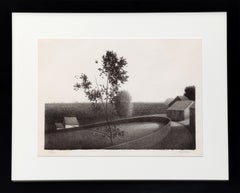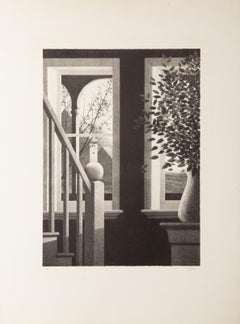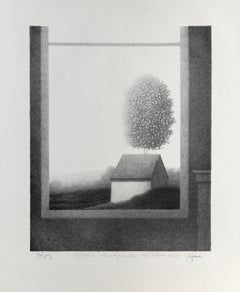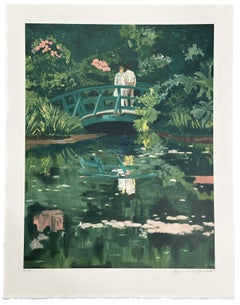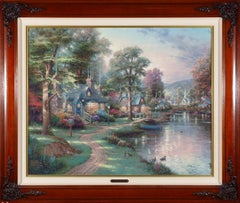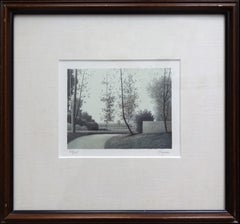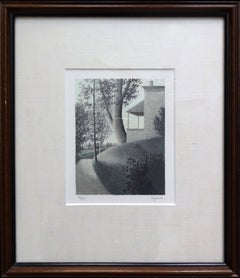Robert Kipniss Art
Robert Kipniss was born in 1931 in New York City. He has studied at the Art Students League, Wittenberg University and the University of Iowa, where he received his BA and MFA in painting and art history. Kipniss spent many years making lithographs from stone, aluminum and Mylar plastic. He then switched to pre rocked mezzotint plates of copper, which create his signature soft and dreamy images. Kipniss's works are in the Metropolitan, Boston MFA and the Smithsonian, among many.
1970s American Impressionist Robert Kipniss Art
Lithograph
1980s American Impressionist Robert Kipniss Art
Lithograph
1980s American Impressionist Robert Kipniss Art
Lithograph
1980s American Impressionist Robert Kipniss Art
Lithograph
1980s American Impressionist Robert Kipniss Art
Lithograph
1980s American Impressionist Robert Kipniss Art
Lithograph
20th Century Expressionist Robert Kipniss Art
Lithograph
Late 20th Century American Modern Robert Kipniss Art
Lithograph
1980s American Modern Robert Kipniss Art
Lithograph
1980s American Impressionist Robert Kipniss Art
Lithograph
1980s American Impressionist Robert Kipniss Art
Mezzotint
1980s American Impressionist Robert Kipniss Art
Lithograph
1980s American Realist Robert Kipniss Art
Lithograph
1970s American Realist Robert Kipniss Art
Lithograph
1980s American Impressionist Robert Kipniss Art
Lithograph
1980s American Impressionist Robert Kipniss Art
Lithograph
1980s American Impressionist Robert Kipniss Art
Lithograph
1980s American Impressionist Robert Kipniss Art
Lithograph
21st Century and Contemporary Modern Robert Kipniss Art
Mezzotint
1970s American Realist Robert Kipniss Art
Paper, Pencil
1980s American Impressionist Robert Kipniss Art
Lithograph
1980s American Impressionist Robert Kipniss Art
Lithograph
Early 2000s Contemporary Robert Kipniss Art
Mezzotint
1980s American Impressionist Robert Kipniss Art
Lithograph
1980s American Impressionist Robert Kipniss Art
Lithograph
1980s American Impressionist Robert Kipniss Art
Lithograph
1980s American Impressionist Robert Kipniss Art
Lithograph
20th Century American Impressionist Robert Kipniss Art
Lithograph
Mid-20th Century Impressionist Robert Kipniss Art
Aquatint
1990s American Impressionist Robert Kipniss Art
Lithograph
Late 20th Century American Impressionist Robert Kipniss Art
Lithograph
Late 20th Century American Impressionist Robert Kipniss Art
Lithograph
1760s Impressionist Robert Kipniss Art
Paper, Ink
1940s American Impressionist Robert Kipniss Art
Lithograph
1980s American Impressionist Robert Kipniss Art
Paper, Ink, Lithograph
1970s American Impressionist Robert Kipniss Art
Paper, Ink, Watercolor
Late 20th Century American Impressionist Robert Kipniss Art
Lithograph
Late 20th Century American Impressionist Robert Kipniss Art
Lithograph
1980s American Impressionist Robert Kipniss Art
Lithograph
1980s American Impressionist Robert Kipniss Art
Lithograph
1980s American Impressionist Robert Kipniss Art
Lithograph
1980s American Impressionist Robert Kipniss Art
Lithograph
1980s American Impressionist Robert Kipniss Art
Lithograph
Early 2000s American Realist Robert Kipniss Art
Mezzotint
Early 2000s American Realist Robert Kipniss Art
Oil
1960s Robert Kipniss Art
Lithograph
Late 20th Century American Modern Robert Kipniss Art
Lithograph
1970s American Impressionist Robert Kipniss Art
Lithograph
Early 2000s Contemporary Robert Kipniss Art
Mezzotint
1980s Realist Robert Kipniss Art
Paper, Lithograph
